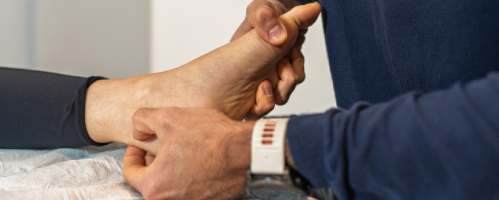Comprehensive Manual Therapy Techniques
Manual Therapy is a specialized physical treatment that uses skilled hand movements to assess and treat musculoskeletal issues. By targeting tissues and joints this technique aims to improve flexibility reduce pain and restore normal movement patterns. Unlike other therapies Manual Therapy focuses on enhancing muscle function and mobility through specific manual interventions.
Core Techniques in Manual Therapy
Manual Therapy incorporates a variety of techniques designed to address musculoskeletal discomfort and promote recovery:
- Soft Tissue Mobilization: This technique applies pressure to muscles to break up scar tissue reduce stiffness and increase mobility.
- Massage Therapy: Involves applying pressure to soft tissues to release muscle tension enhance blood flow and prevent tissue adhesions.
- Myofascial Release: Aims to relieve tightness in the fascia the connective tissue surrounding muscles using sustained pressure to restore movement.
- Joint Mobilization: Passive techniques that move joints gently to restore their natural movement patterns and reduce discomfort.
Understanding How Manual Therapy Works
Before beginning treatment the therapist evaluates the patient's medical history and performs an assessment to determine if Manual Therapy is appropriate.
The therapist uses hands-on techniques to mobilize muscles and joints alleviate tension and restore function. This may involve sustained pressure gentle manipulation or rhythmic movements aimed at improving tissue flexibility and range of motion.
The goal of Manual Therapy is to reduce pain improve joint function and assist with soft tissue healing through hands-on interaction with the body.
Advantages of Manual Therapy
- Alleviates neck and back pain.
- Reduces muscle stiffness and swelling.
- Improves joint flexibility and range of motion.
- Helps manage chronic pain conditions.
- Promotes recovery from injuries.
- Improves posture and muscle performance.
- Relieves headaches and migraines.
- Neck pain including disc pathology and muscle spasms.
- Chronic back pain and spinal issues.
- Headaches including migraines.
- Joint pain such as shoulder knee and hip issues.
- Muscle tension and restricted movement.
- Soft tissue injuries including sprains and strains.
- Fibromyalgia and myofascial pain syndrome.
Conditions Addressed by Manual Therapy


Safety Tips for Manual Therapy
Certain conditions may require precautions before undergoing Manual Therapy. It's important to consult a healthcare provider if you have:
- Recent fractures or injuries.
- Skin infections or open wounds.
- Osteoporosis or brittle bones.
Potential Effects of Manual Therapy
While Manual Therapy is generally safe some patients may experience mild side effects including:
- Temporary soreness or discomfort in treated areas.
- Fatigue or lightheadedness post-treatment.
- Occasional muscle stiffness as tissues adjust.
What Happens During a Manual Therapy Session?
Manual Therapy is usually well-tolerated by most patients. Some may experience mild discomfort during treatment but it is generally brief. The therapy aims to provide relief from muscle pain improve flexibility and restore normal movement promoting overall well-being.
